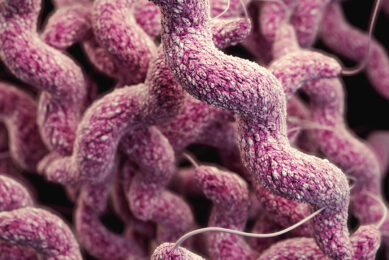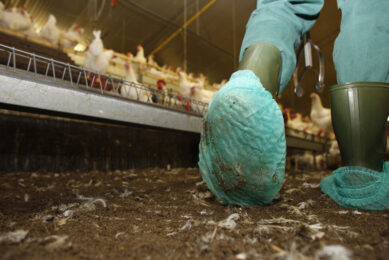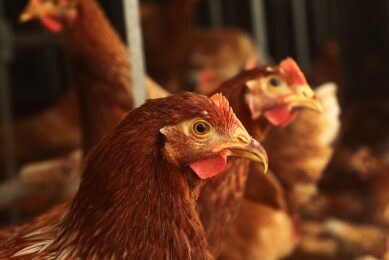Susceptibilty analysis of Campylobacter in broilers

Abstract on comparative genotypic and antimicrobial susceptibility analysis of zoonotic campylobacter species isolated from broilers in a Nationwide Survey.
Campylobacter is a major cause of human foodborne disease worldwide and has been associated with the consumption of contaminated poultry. The prevalence of Campylobacter species in broiler flocks from more than 200 producers widespread in mainland Portugal was assessed in 2008 in response to Commission Decision 2007/516/EC. Campylobacter isolates were obtained from 83.3% of 424 pooled cecal samples, with a higher prevalence of Campylobacter coli (61.2%) than Campylobacter jejuni (38.8%). Restriction fragment length polymorphism analysis of the flaA gene (flaA-RFLP) of 112 C. coli isolates and 67 C. jejuni isolates yielded 11 flaA-RFLP patterns with HinfI (Hunter Gaston diversity index [HGDI] = 0.62) and 48 flaA-RFLP patterns with DdeI (HGDI = 0.89), indicating a high level of genetic diversity.
A wide geographic distribution of the most frequent restriction pattern was observed. MICs of five antimicrobials (ciprofloxacin, gentamicin, streptomycin, erythromycin, and tetracycline) were determined for 215 C. coli isolates and 136 C. jejuni isolates. The occurrence of non-wild-type isolates, exhibiting an acquired resistance phenotype, was higher for C. coli than C. jejuni for all antimicrobials tested. Sixty-three percent of C. jejuni and C. coli isolates were considered non-wild type based on their response to both ciprofloxacin and erythromycin, which are frequently used in the treatment of human infections.
The high prevalence of antimicrobial-resistant Campylobacter strains detected supports the need for increased epidemiological surveillance and prevention in a country where large amounts of poultry meat are consumed.
Related website.













